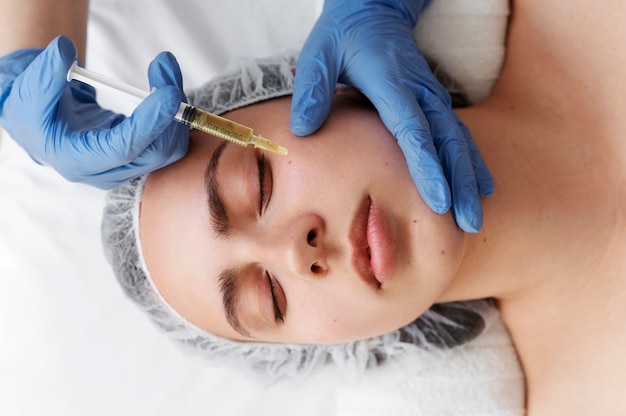Acne scars can be a frustrating reminder of a battle long fought, often leaving individuals searching for effective remedies. Among the myriad of treatment options, microneedling has emerged as a popular, albeit controversial, choice.
This minimally invasive procedure, which involves creating tiny wounds in the skin to stimulate healing and collagen production, raises the question: can it truly diminish the appearance of those stubborn scars? As science unravels the complexities of skin rejuvenation, understanding the mechanisms behind microneedling is essential. Join us as we delve into the research and evidence surrounding this intriguing technique, exploring not just its potential benefits but also the realities faced in the quest for clearer skin.
Understanding Acne Scars: Types and Causes

Understanding acne scars requires a deep dive into their diverse forms and the myriad causes that lead to their formation. Primarily, acne scars can be categorized into two main types: atrophic and hypertrophic.
Atrophic scars, often characterized by their sunken appearance, result from the loss of tissue, while hypertrophic scars present as raised, thickened areas caused by an overproduction of collagen during the healing process. The causes of these scars are multifaceted; they stem from inflammatory acne, which manifests when pores become clogged and bacteria proliferate.
Factors such as the severity of the acne, the individual’s skin type, and even genetic predisposition play crucial roles in how our skin heals—or fails to heal—after an acne outbreak. Understanding this interplay is vital for those seeking effective treatments, like microneedling, to address these often stubborn indentations and irregularities left behind.
Clinical Evidence: What Research Says
Clinical evidence surrounding microneedling and its efficacy in treating acne scars offers intriguing insights for those seeking clearer skin. A multitude of studies demonstrates that this innovative technique stimulates collagen production—an essential component in skin healing—thereby helping to reduce the appearance of scars.
For instance, a randomized controlled trial revealed significant improvements in scar texture and visibility after a series of microneedling sessions, with participants reporting both physical and psychological enhancements. Furthermore, research highlights the procedures minimally invasive nature, reducing downtime while delivering promising results.
However, some findings suggest that individual variations in skin type and scar severity can influence outcomes, emphasizing the importance of tailored treatment plans. Overall, the clinical landscape paints a hopeful picture for those grappling with the aftermath of acne, suggesting that microneedling could be a transformative option in their skincare journey.
Post-Treatment Care and Healing Process

After undergoing microneedling treatment, diligent post-treatment care is essential for optimal healing and results. Immediately following the procedure, the skin may appear red and slightly swollen, resembling a mild sunburn.
This is completely normal and should subside within a few days. To support the healing process, its crucial to adhere to a gentle skincare routine.
Use only mild, hydrating products and avoid active ingredients like retinoids or acids for at least a week. Sun protection becomes paramount—applying a broad-spectrum sunscreen diligently will safeguard the renewed skin from UV damage.
Additionally, staying hydrated and avoiding strenuous exercise for a few days can further enhance the recovery process. As your skin begins to repair, you may notice a gradual improvement in texture and tone, with the final results continuing to emerge over the following months.
Remember, patience is key, as the journey to clearer skin is a marathon, not a sprint.
Conclusion
In conclusion, microneedling has emerged as a promising treatment option for addressing acne scars, with a growing body of scientific evidence supporting its efficacy. By promoting collagen production and enhancing skin texture, microneedling can significantly improve the appearance of scars for many individuals.
However, its essential to consult with a qualified professional to discuss personalized treatment plans and potential outcomes. For those seeking expert advice and treatment options, spbeauty.co.uk offers a wealth of resources and services to help individuals navigate their skincare journeys. With the right approach, microneedling might just be the key to restoring confidence and achieving clearer skin.

